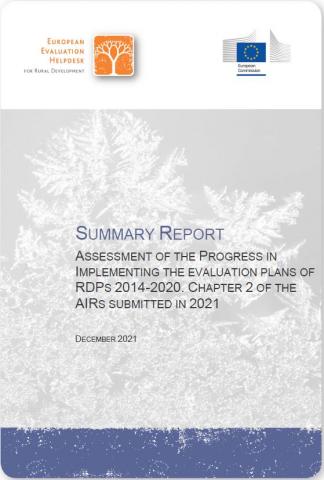
This report describes the progress in implementing the Evaluation Plans (EP) and is based on the screening of Chapter 2 of the Annual Implementation Reports (AIRs) submitted in 2021.

This report describes the progress in implementing the Evaluation Plans (EP) and is based on the screening of Chapter 2 of the Annual Implementation Reports (AIRs) submitted in 2021.
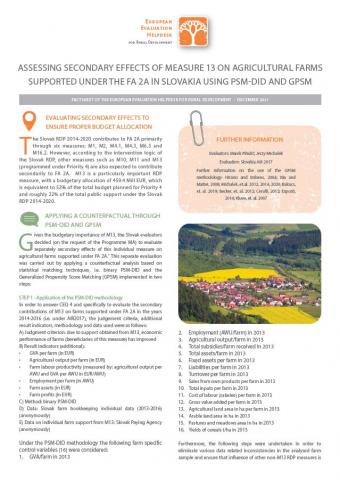
Given the budgetary importance of M13, the Slovak evaluators decided (on the request of the Programme MA) to evaluate separately secondary effects of this individual measure on agricultural farms supported under FA 2A.This separate evaluation was carried out by applying a counterfactual analysis based on statistical matching techniques, i.e. binary PSM-DID and the Generalized Propensity Score Matching (GPSM) and is discussed in this Factsheet.

Discover articles on:
Expand your knowledge of:
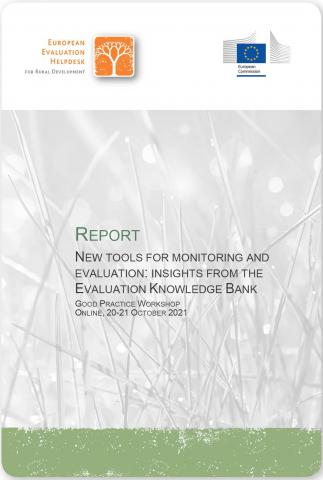
This report summarises the major outcomes of the Good Practice Workshop, ‘New tools for monitoring and evaluation: insights from the Evaluation Knowledge Bank’, which was hosted by the European Evaluation Helpdesk for Rural Development.
The overall objective to share and communicate the results of some of the research projects and their outputs from the Evaluation Knowledge Bank that are relevant for the evaluation of the CAP.
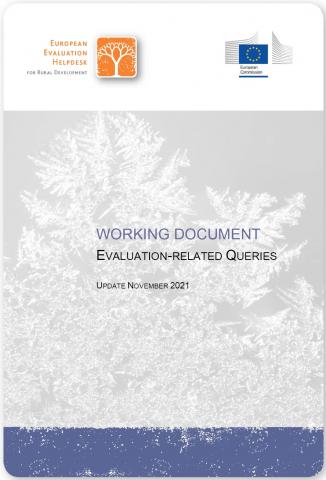
This working document compiles a selection of evaluation-related queries raised by the Member States between 2016 and March 2021. Answers were prepared by the European Evaluation Helpdesk for Rural Development in collaboration with the responsible Commission services.
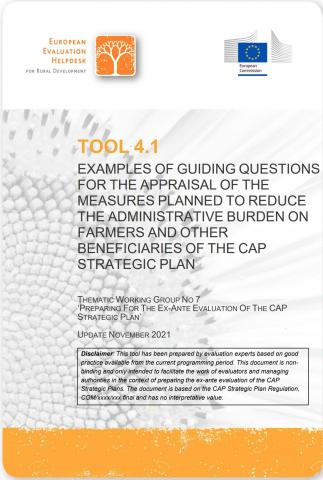
Tool 4.1 Examples of guiding questions for the appraisal of the measures planned to reduce the administrative burden on farmers and other beneficiaries of the CAP Strategic Plan according to Articles 139.3 (f) of the COM (xxxx) xxx final (SPR).
While the New Delivery Model has reduced the level of detailed legislation at EU level it has at the same time empowered the Member States to set rules and bring forward solutions to simplify the implementation of the CAP. It is therefore vital that the Member States describe in the CAP Strategic Plans the steps taken or planned to ensure simplification of the policy implementation at the level of the final beneficiaries.
The ex-ante evaluators will take an external, critical look to how the administrative burden perceived by beneficiaries has been analysed and reflected in the specifications in the CAP Strategic Plan and will give further recommendations how to simplify and reduce possible complexities for the beneficiaries.
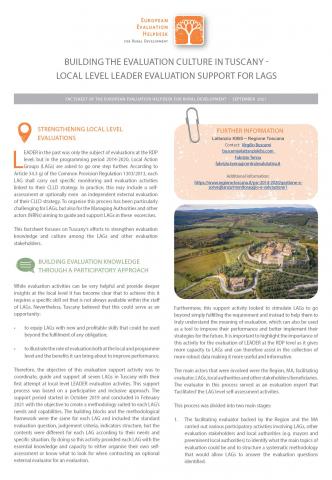
This factsheet focuses on Tuscany’s efforts to strengthen evaluation knowledge and culture among the LAGs and other evaluation stakeholders.

Discover articles on:
Expand your knowledge of:
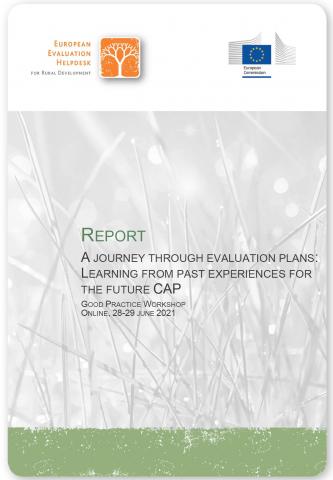
This report summarises the major outcomes of the Good Practice Workshop, ‘A journey through evaluation plans: Learning from past experiences for the future CAP’, which was hosted by the European Evaluation Helpdesk for Rural Development.
The overall objective of the workshop was to reflect on experiences in relation to the design and implementation of Evaluation Plans. Specifically, it aimed at: exchanging experiences concerning the design and implementation of Evaluation Plans in order to identify what worked well and what should be avoided; discussing specific elements of the Evaluation Plans in relation to the process, governance, content, management, and communication; and identifying best practices for the future for further promoting evaluation culture and for better design and implementation of the Evaluation Plans.
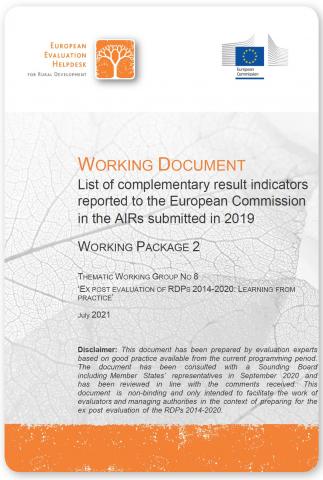
These tables provide an overview of the reported values of complementary result indicators per Rural Development Programme, which Member States reported to the European Commission in 2019, via SFC. The indicator values were reported from the operations with primary, secondary and LEADER contributions.